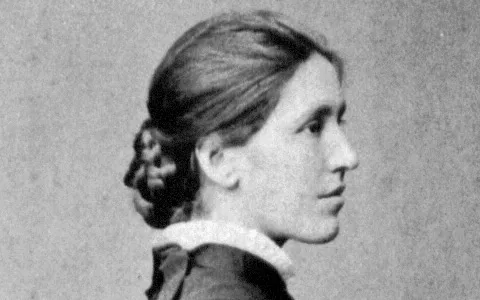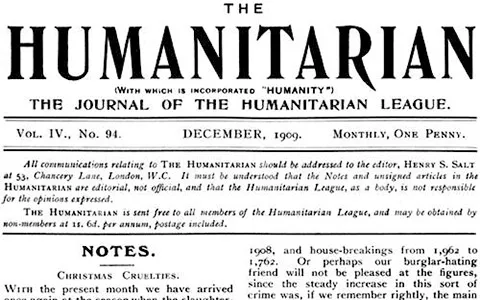A second historical article on the publishers George Bell & Sons:
Whatever of the Arcadian element may yet be associated with Covent Garden is bordered, to some extent, by the academic, for between the famous flower market and the Strand the offices of well-known periodicals and prominent publishing houses are clustering thickly.
Among them may be found the establishment of Messrs. George Bell & Sons, a firm of wide reputation, not only by reason of its connection with the famous Bohn’s Libraries, but on account of the high-class character and educational value of many of its other publications.
There is nothing pretentious about the place in which Messrs. Bell have been settled so long. But the moment one enters the doors, upon the plain posts of which are still inscribed the familiar words ‘Bohn’s Libraries,’ there is a feeling of being in a corner of bookland which has many associations, carrying one ‘far back to other days.’
But let us turn to the firm itself and its foundation, for some which have already been sketched in these columns, it is a house with a history.
THE LATE MR. GEORGE BELL,
the founder of the firm, was born in the year 1814. Like many other successful so-called London men, ‘ he hailed from the north. George Bell was born at Richmond, in Yorkshire, in the year 1814. His father was even then in business as a bookseller in that picturesque old town, and sent his son to the Richmond Grammar School to be educated under the mastership of the Rev. James Tate, a well-known classical scholar, who enjoyed a high reputation in the north of England. At the comparatively early age of eighteen, young Bell came to London, and entered the house of Whittaker & Co., Ave Maria Lane. This firm had not only a large wholesale bookselling business, but at that time were the chief educational publishers in London.
In the year 1839 Mr. Bell commenced business on his own account in Bouverie Street, where he acted as London agent for the principal University booksellers. His own tastes seem to have led him mainly in the direction of educational literature, and gave a character to his business which distinguishes the firm at the present day.
HIS EARLY PUBLICATIONS.
Mr. George Bell was the first publisher of the Journal of Education, which is now the recognised organ of the higher education of the country.
His scholastic and clerical connection also brought him into contact with many of the movers in the revival of the study of mediæval archæology which was just then at its height. He published numerous architectural works by Boutell, Buckler, Sharpe, and others, including the finely illustrated volume on French architecture by the Rev. J. L. Petit. Mr. Bell also became the publisher of Notes and Queries, then edited by its founder, the late Mr. Thoms.
The most important of his earlier undertakings, however, was the projection and publication of the well-known classical series the ‘Bibliotheca Classica,’ and the Grammar School Classics. ‘
Previous to the year 1850 there were very few English annotated editions of the classics, students being chiefly dependent upon German editions.
It was Mr. Bell’s idea that there was room for a library of annotated classics representing the best English scholarship the day.
With the aim of starting such a library he sought the advice, and in some instances the practical co-operation, of Mr. Goldwin Smith, Mr. Donaldson, Mr. George Long, Mr. A. J. Macleane, Dr. B. H. Kennedy, Mr. Blakesley, and others. In partnership with Messrs. Whittaker & Co., he produced a series of books which, though to a great extent superseded by more recent editions, had an important influence upon the classical education of the country.
MESSRS. BELL & DALDY.
By this time Mr. Bell’s business had largely developed and been removed to Fleet Street. He entered into partnership with Mr. F. R. Daldy, who, since his retirement from the firm of Bell & Daldy, has become the Managing Director of Messrs. J. S. Virtue & Co., Limited.
In 1855, when the business of Messrs. J. & J. J. Deighton, of Cambridge, was for sale, Mr. Bell bought it, and, in partnership with Mr. W. W. Smith, carried it on under the style of Deighton, Bell & Co. The firm still flourishes under the same name, although Mr. Bell ultimately withdrew.
BOHN’S LIBRARIES.
In 1864, when Mr. Henry Bohn was retiring from business, Messrs. Bell & Daldy purchased the stock and copyrights of his well-known Libraries, and in 1867 removed from Fleet Street to Mr. Bohn’s premises in York Street, Covent Garden, where the firm of to-day is still located.
In July 1873, Mr. Daldy retired from the business, and some years afterwards Mr. Bell admitted two of his sons as partners, and the style of the house became George Bell & Sons, by which name it is now well known. Mr. Bell, sen., died at his residence at Hampstead in November 1890. He was widely respected and held a somewhat special position in the publishing trade. His advice on all matters of business connected therewith was much valued by his brother publishers.
IN PRIVATE LIFE,
Although Mr. Bell was actively engaged in his own business affairs, he was constantly appealed to in reference to the value and disposal of publishing businesses and literary property. But he found time for usefulness in other channels, and his interests were by no means exclusively confined to publishing pursuits. In conjunction with his friend Mr. George William Bell, he was one of the founders of the Boys’ Home—a well-known industrial training school near Regent’s Park—and throughout his life he took great interest not only in that institution but also in Church extension work in the parish of Hampstead, where he resided for upwards of forty years.
MR. EDWARD BELL,
now head of the firm, is the eldest son of the late Mr. George Bell, and was educated at St. Paul’s School, whence so many able scholars have proceeded. In due course he obtained an exhibition at Trinity College, Cambridge, where he graduated in 1867.
Immediately after leaving college he joined the business which was then being removed to York Street, Covent Garden.
Since his connection with it he has interested himself largely in developing the business and in the expansion and improvement of the property the firm acquired in Bohn’s various libraries.
Mr. Bell has himself edited some of the firm’s most important publications, and is also known as an occasional writer upon historical architecture. A few years ago he was elected a Fellow of the Society of Antiquaries. Like his father, he takes a practical interest in the local affairs of the borough of Hampstead, where he resides in one of the hold houses which still remain from the early days of the last century, and which enjoys the distinction of having been the property of George Romney.
MR. ERNEST BELL
is the third son of the founder of the firm (Mr. Arthur G. Bell, who is an artist, being the second son). Mr. Bell was born in 1851, and, like his brother, was educated at St. Paul’s School and at Trinity College, Cambridge.
He spent a year in Germany before his connection with the business, which he joined in 1874. He has edited a translation of ‘Lessing’s Dramatic Works’ and other volumes published by the firm. Apart from business, his name is known in connection with several societies for the amelioration of the condition of animals and other benevolent institutions. His private residence is at Hendon.
MESSRS. BELL’S PUBLICATIONS.
Messrs. George Bell & Sons are proprietors of the business of Messrs. Whittaker & Co., Ave Maria Lane, E.C., and are well known for their educational and scientific publications, and for technical works; indeed, they are most extensive educational publishers. ‘The “Aldine Poets”’ series was originated by Messrs. Pickering (and the elder Mr. Charles Whittaker), and my father bought the copyright,’ said Mr. Edward Bell, by way of supplement to the ‘interview’ at which he furnished the foregoing particulars. ‘Since then we have added largely to the series,’ he continued, ‘and now the last volume of Wordsworth is about to be issued.’
In reference to Bohn’s Libraries, and in reply to a query with regard to the change in the style of binding—since the beginning of the present year—Mr. Bell answered:
‘Well, the old binding may yet be obtained, but is being superseded, the new binding being somewhat similar to Messrs. Macmillian’s series, but the colours vary, and each “Library” has a distinctive colour. The old binding dates back to 1848, and is antiquated now.’
PEPYS’ DIARY.
Speaking of the remarkable reprint of Pepys’ Diary which the firm are now engaged in producing, Mr. Bell said: ‘The new series will be completed in eight volumes, of which we have already published one, and it will be by far the most complete that has ever appeared. It contains almost a fifth more than preceding editions, and omits only a few passages which, of course, it is not expedient to publish. It has also been thoroughly revised, and the ordinary edition is being issued at half-a-guinea per volume, but a large-paper edition at a guinea is already sold. It will, however, take two years to produce the entire work, as only one volume can be issued quarterly.’
The Publishers’ Circular, No. 1402, May 13, 1893, pp. 524-6


